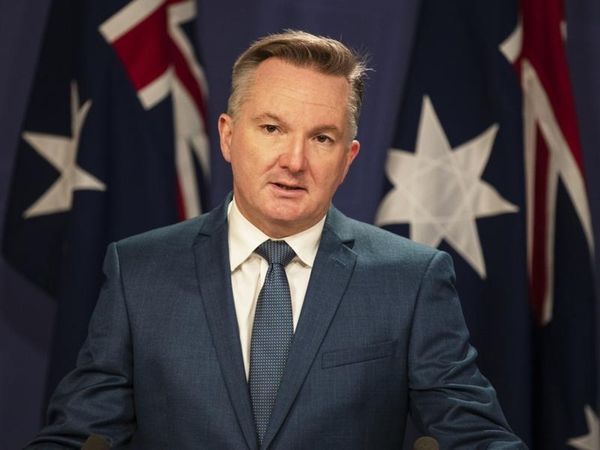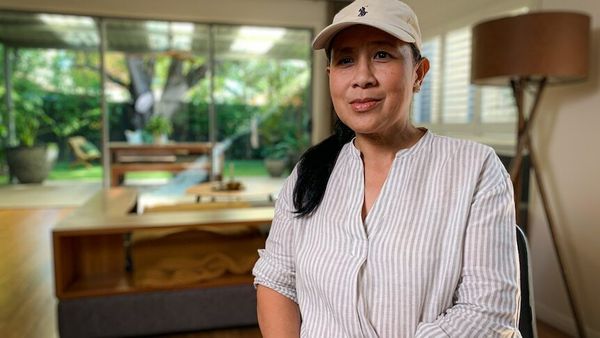
Households in Queensland, New South Wales and elsewhere will face double-digit increases in their power bills from July after the regulator lifted its standard electricity price after generation costs soared by close to half.
The Australian Energy Regulator, which was ordered to delay the release of its default market offer (DMO) from 1 May until Thursday by the outgoing Morrison government, said residential customers in south-east Queensland will see increases of 11.3%-12.6%, or about double the expected inflation rate.
Similarly in NSW, residential customers will see increases 8.5%-18.3%, or much higher than the inflation rate. South Australia, the other state covered by the DMO, will see prices rise as much as almost 20%, while Victoria released its own reset for 2022-23 on Tuesday, lifting the price by 5%.
The DMO was set up in 2019 to give consumers who don’t shop around a “price safety net”. The offer serves as a price cap for residential and small business customers for how much energy retailers can charge electricity consumers on default plans, known in the market as standing offer contracts.
Rising gas and coal prices globally have contributed to a spike in wholesale power prices to record levels. Repairs or outages to as much as a third of the coal-fired power fleet have also contributed to the recent jump.
The incoming energy minister, Chris Bowen, said the sharp increase in the standard market price was the result of “nine years of delay and denial” by the Coalition government that would now be left with households and businesses to pay.
“The Liberal legacy is higher power prices” for the residents of Queensland, NSW and South Australia covered by the so-called default market offer, he said. “Nine years of policy chaos means we don’t have enough renewables in the system” nor enough transmission to link them up “the cheapest form of energy” to the grid.
Bowen also took aim at his predecessor, energy minister Angus Taylor, for acting to delay the release of the higher DMO. As reported by Guardian Australia earlier this week, Taylor ordered the regulator to delay the new offer from 1 May until today, after the election.
And here's today's crazy electricity price graph:
— Dylan McConnell (@dylanjmcconnell) May 25, 2022
Quarter three prices up *$30-$40/MWh* in one day, across all mainland NEM regions. pic.twitter.com/bWaOsPIxqF
“Angus Taylor knew this report was coming out,” Bowen said. “They sat on this report. They approved its delay until after the election … they put power prices up and were dishonest about it.”
A spokesperson for Taylor earlier this week denied the delay was for political reasons. During the campaign, Coalition ministers and the prime minister Scott Morrison claimed power prices had fallen by as much as 10%, a figure also included in the March budget.
The spokesperson on Thursday said Bowen’s comments were “factually incorrect”.
“We did not see the final Dmo prices until they were made public this morning so your claims of ‘hiding’ them are complete rubbish,” he said. “They were a decision of [the] AER.”
The AER said that since the last DMO, wholesale costs for retailers have risen by 49.5% in Queensland, 41.4% in NSW and by 11.8% in South Australia. These increases were “due to reductions in thermal generation resulting from unplanned outages and higher coal and gas prices, slowing of investment in new capacity, and increasingly ‘peaky’ demand (sharp highs and lows) driving up the cost of wholesale electricity contracts for retailers”.
The rise in generation costs had preceded Russia’s invasion of Ukraine in February, and the resulting increase in global prices for gas, coal and other energy supplies had compounded Australia’s increases. Extreme weather in NSW and Queensland had also affected coal supplies and electricity demand, as had further unplanned outages at multiple generators, the regulator said.
“In setting these new DMO prices, we understand the significant impact they will have on some consumers who may already be struggling with cost of living pressures,” Clare Savage, AER’s chair, said in a statement.
“We have given scrutiny to all factors affecting the DMO calculation and have set safety-net prices that reflect the current conditions and underlying costs to retailers.”
“If a large number of retailers are unable to recover their costs and are forced to exit the market – as we have seen recently in the United Kingdom – that will add more cost to consumers,” Savage said.
The rises come as the Queensland government raised the rebate offered to households to $175 to help cope with soaring prices, up from $50 promised in February. The state’s wholesale electricity prices are the highest in the nation.
“People are having to make difficult choices including going without,” the premier, Annastacia Palaszczuk, told parliament on Thursday, noting the rebate was possible “because Queenslanders own their power assets – the generators, the transmission and the distribution.
The NSW treasurer, Matt Kean, announced his state will increase the amount of money available for households struggling to pay the bills by a third, starting Monday.
“Eligible customers can receive payment assistance of up to $400 per application for electricity and up to $400 per application for gas bills twice a year,” Kean said in a statement.
“This means the annual maximum limit of vouchers has increased from $1,200 to $1,600 per household.”
Weston Energy early this week told the market it could no longer supply gas to customers as agreed. Regulators triggered a retailer of last provision for the first time in six years to transfer the affected customers to alternative suppliers. Two more retailers, LPE in Queensland and Pooled Energy, have also required intervention.
Gavin Dufty, a spokesperson and energy expert at St Vincent de Paul, said the rise in the market offer was about the levels expected and would affect some 580,000 households.
“It’s a tough gig for the AER in uncertain times. If you put it up too high people on the DMO end up paying above the odds,” Dufty said. “If you put it too low all people out on market offers might see greater increases in prices than those on the DMO.
“It also indicates to me that households with solar are likely to see an increase in feed-in tariff to match the increase in wholesale prices – so may be somewhat insulated from the price changes,” he said.
It was now a “great time” for people with healthcare cards and pension cards to be reminded that there are energy concessions available, Dufty said.
Kellie Caught, Acoss’s energy program director, said the new Albanese government could act to shield low-income households from some of the increases.
“As an immediate first step, the federal government should update its guidelines to the Australian Energy Regulator to set the Direct Market Offer at an efficient price by lowering retail margins, as has been done in Victoria,” she said. This would ensure people do not pay more than is required for an essential service.”
“Other priorities include improvements to energy concessions and expanding access to energy efficiency measures and rooftop solar for low-income homeowners,” Caught said. “We also urge the government to immediately increase income support payments to at least $70 a day, so everyone can cover the basics.”
The regulator said residential customers switching from the Dmo price to the median market offer could save between $294 and $443 depending on their network region. For small business customers, the switch could save between $733 and $1,308.










